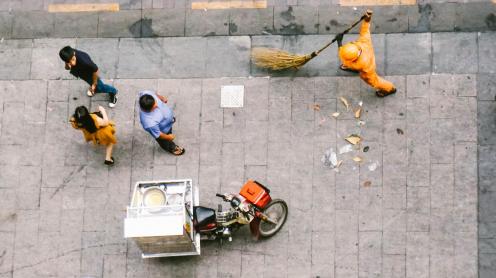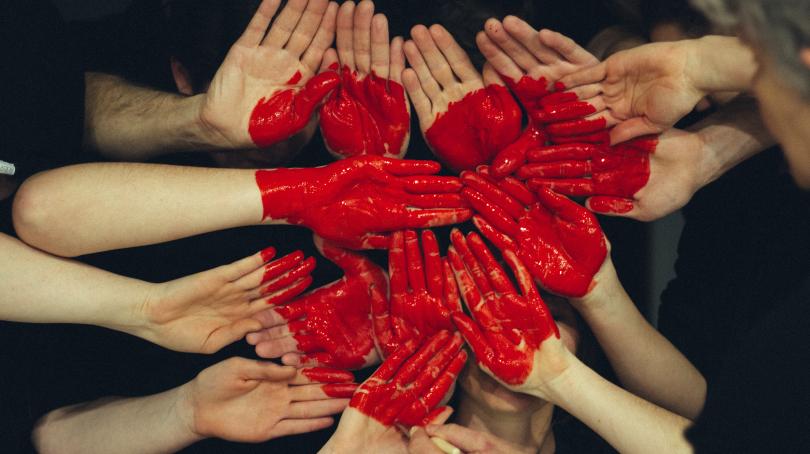
Social justice
Altruism appears to be absent from regular economic debate. However, money flows within relationships, and parents or friends can usually be counted on to lend a helping hand. These private transfers represent an even larger share of redistribution in developing economies. When the Welfare State is weak, informal transfers are a wild card for the poorest. Even social welfare policies could prove counter-productive when there is a good altruistic network in place!
Altruism is not just a quality, it is also a factor influencing the economy. Its impact on private transfers is studied by Renaud Bourlès, Yann Bramoullé, and Eduardo Perez-Richet. In Europe, even though the Welfare State plays a redistributive role, family ties remain the last line of defence. Following the 2008 crisis, financial transfers within French families doubled, reaching about 4% of GDP. In developing countries, where only minimal public income is redistributed, such transfers play a key role. Family and friends often replace the welfare state. Under such conditions, can a redistributive policy be effective?
We need to look at altruism more closely. Do individuals expect something in return? Altruism could hide reciprocity. But altruism still governs some developing countries’ exchanges. A Haya village in Tanzania is an example. In the 2000s, a survey1 showed unreciprocated transfers occurring between kin. The authors first studied the presence of reciprocal risk-sharing, where individuals give with the expectation of return. Help is provided today in exchange for the credible promise of future return in case the situation is reversed. Reciprocity means you only help those who are able to help you. In Nyakatoke, the 119 respondents donate to friends, whether they are disabled or not. Those who suffer from chronic illness also receive donations, although they won’t be able to give back. Some wealthy Haya aid others without any certainty of getting their money back. Transfers among kin represent 43% in the village and are driven by social norms or altruism.
Whether driven by affection, education or social norms, altruism influences the economy. The three authors of “Altruism in Networks” use a theoretical model to explore it.
People give to others they care about and, in particular, to their family or friends in need. When their friends earn less than them, they want to restore the balance. Above a certain limit, the wealthiest want to reduce the gap. The stronger the relationship, the lower the limit (ex. Adults generally guarantee their children the same living conditions they enjoy). In a complex network, transfers flow through social and family networks, thanks to intermediaries. The poorest do not necessarily receive from the wealthiest, but through the multiple connexions existing inside the network. Intermediaries are therefore essential.
Poor people have access to health care and primary goods if they are socially included. In the Philippines, three economists, Cox, Hansen, and Jimmenez2, found that private transfers help reduce consumption inequalities. Housewives or less-educated people receive the most. The whole system is based on these transfers: they represent 20% of the total revenue of urban households!

Photo by Tim Marshall on Unsplash
A new public program can generate income shocks that damage the network of altruistic transfers. Although it seems counterintuitive, social policies may increase inequalities! Redistributive policies change incomes and have far-reaching consequences on the equilibria of donations. Economists Becker and Barro identified this issue in 1974: public redistribution can thwart private transfers.
Altruism is often neglected by decision-makers in spite of its impact on the economy. According to the authors’ model, redistributive policies depend on the relationships between private donations and social benefits. Their effect is positive when they take the wealth from rich but not very altruistic people. If money reaches social classes that donate more, the poorest will benefit from both public and private transfers, and inequalities will be reduced.
Redistribution becomes ineffective when it cuts the main donators’ income. They tend to decrease their informal support as a consequence. State subsidies do no more than compensate for this decrease. Or even worse, redistributive policies can be counterproductive when social benefits don’t even make up for the reduction in private donations. Consumption inequality increases due to inappropriate distribution, with money not getting to the most deprived. It goes to citizens whose needs are not as urgent. With a poor aim, social programs don’t hit their target. So how can the state improve its aim?
While the authors’ model applies to many contexts, targeting issues especially affect developing countries. It is always difficult to obtain a clear understanding of their economic situation. For instance, data collection is sporadic and only partially indicates citizens’ income. Additionally, the informal sector takes a lot of room and issues unclear information. According to Cox, Hansen, and Jimmenez, in Welfare States, private transfers have already been crowded out by public spending. Thus, redistribution is more likely to operate. Conversely, where few public transfers exist, the risk of a counter-productive effect is higher. In the Philippines, from 30 to 80% of private transfers could be squeezed out for those in the lowest quintile of pre-private transfer income.
Such conclusions call for greater awareness of family behaviour in economics and what it implies for the implementation of redistributive policy. Although redistribution helps to reduce the income gap, it can worsen consumption inequality. Besides risk-sharing and self-enforcement due to reciprocity, donations also impact the economy. Altruism may be a factor in decision-making, but does it stem from respect for social norms or a need for recognition? Or is it an act of caring? These questions open the debate to sociologists or philosophers.